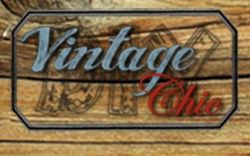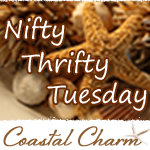Once you have the bender set up, the first step is to line up your steel rod. Make sure to not only center the die on the rod, but make sure the rod is square in the die.
Then, pump the bender up as far as it will go. On this type of bender it will likely be only slightly tighter than 90 degrees.
To remove the rod, twist the pressure release valve.
The jack should drop and you can pull out your bent rod.
To keep the rod from twisting, I discovered it nestled in the relief cut in the concrete floor of my garage. At that point, I just had to step on the bottom leg, and pull down, bending the rod as far as I could.
This is what I ended up with. Not bad!
I have seen rounded hairpin legs like this before, but I like the look of a sharper angle, so off to the bench vise we went.
A bench vise is an extremely useful tool! I’ve used it to hold bolts that I need to cut off, like on my Don Draper Desk, and it is absolutely essential to create Custom Casters.
After tightening the angel in the bench vise, this is what my rod looked like. Much better.
Next, I need to cut my rod down to length. I measured 8″ down from the center of the arch, and marked both legs horizontally. Then, using an angle grinder and a cut off wheel, I chopped off the excess. Don’t worry about cutting the ends at an angle, you can adjust that when welding.
For this next step, you need an extra set of hair arms.
I lined the ends of the rod with 2 pre-drilled holes in the corner brace. Not necessary, but it made it easier to line both ends up perfectly and it made it possible to weld the rod on the backside as well, creating a stronger attachment.
To find the angle I wanted the legs to sit, I simply held up a tape measure, and measured the distance from the table to the top of the arch. This way, for the other 3 legs, I only had to line up the rod ends in the same holes, and adjust the arch till it was at the same height.
At this point, both my hairy-armed helper and myself put of a pair of welding gloves and a hood. He held the arch in place while I welded the ends of the rod to the corner brace.
To make sure these legs were super strong, I flipped the corner braces over, and welded through the hole.
In order to get a nice, flat mounting surface, I ground down the welds on the backside. We have a bench grinder we picked up on craigslist for $20, but an angle grinder with a grinding disc would work just fine.
If you have any questions, feel free to ask in the comments below!
If you dig the vintage industrial look, check out my:
+ World Market “Aiden” Coffee Table knock off
+ Industrial Farmhouse Table
+ Zinc Top Coffee Table
Linking at:































You.are.amazing. In a hundred years, maybe I will be as cool as you, maybe! I love them!
Wow, I don't have the tools to do that, but that's so awesome! Thanks for sharing on Worthwhile Wednesdays
~Allie http://thecraftiestallie.blogspot.com
That is awesome! Definitely something I want to do, though I don't know when I will have time! Pinning for when I do! Thanks for linking up with Craft Frenzy Friday. :o) Charlie
Seriously Elisha, you are one of the coolest girls e.v.e.r. – you can do it all. Those hairpins look awesome.
Oh my goodness, the beau and I have been brainstorming ways to make our own hairpin legs for over a month now… and you've taken ALL the guess work out of it!
Kind of sad I didn't see your post sooner since we JUST took our bi-annual trip to Harbor Freight this past weekend. Ahh, well it's on the list for next time!!
nice DIY, and great work. but please, in the future, make sure you tuck your hair into the back of your shirt. the pigtails are a start, but if one gets caught in that bench grinder, you're gonna be scalped, if you're lucky.
Seriously, call me Mr. Safety, buy my stomach lurched when I saw the picture of you working at the grinder. See: http://www.nytimes.com/2011/04/14/nyregion/yale-student-dies-in-machine-shop-accident.html
You got your hot-rolled (HR) and cold-rolled (CR) steel reversed. HR is much softer than CR steel though at the diameter you're working with it probably doesn't make a difference. CR is going to be shiny and grey and HR is going to be black and have a dull finish.
Oh my god. You are awesome. The way you used all the tools to make this amazing hair pin legs is mind blowing. Salute to you. I am also crazy about metal table legs. I would have definitely tried this out but I already got it from http://www.complement-ltd.co.uk/product-category/table-legs/ . But surely I will suggest it to other people around me & try it in future for my own house. Thanks for the amazing post.